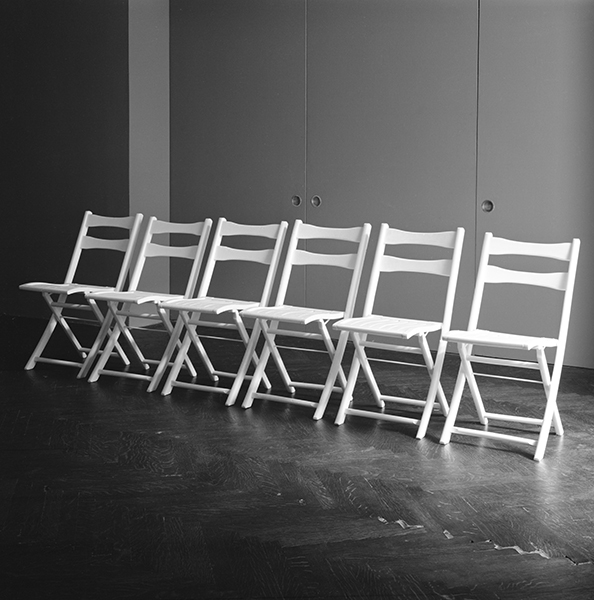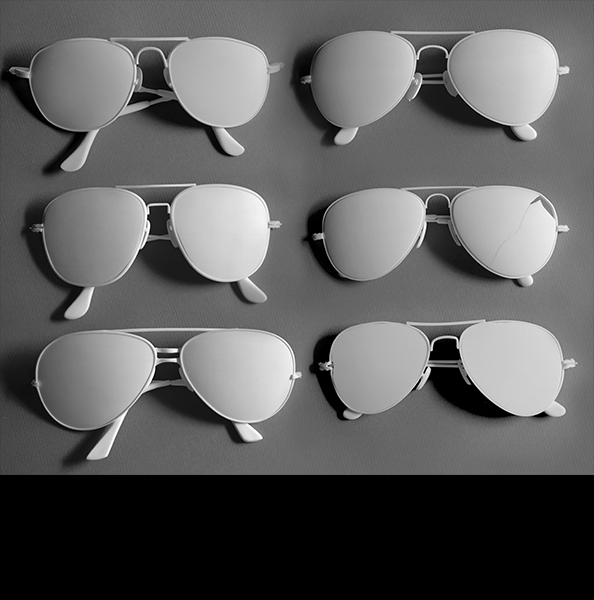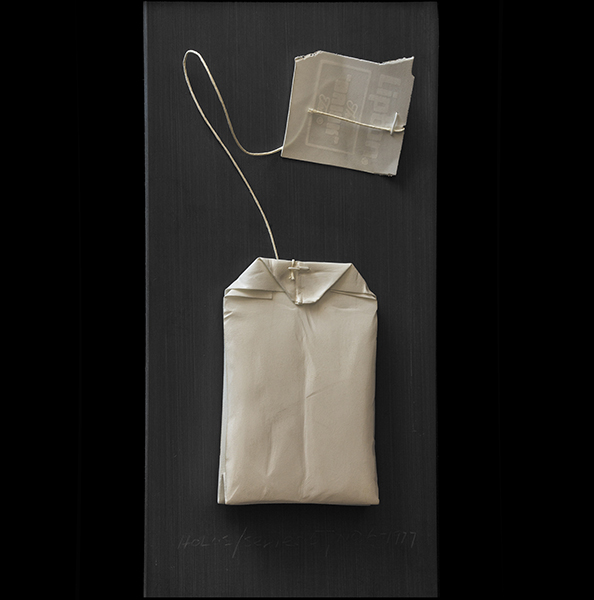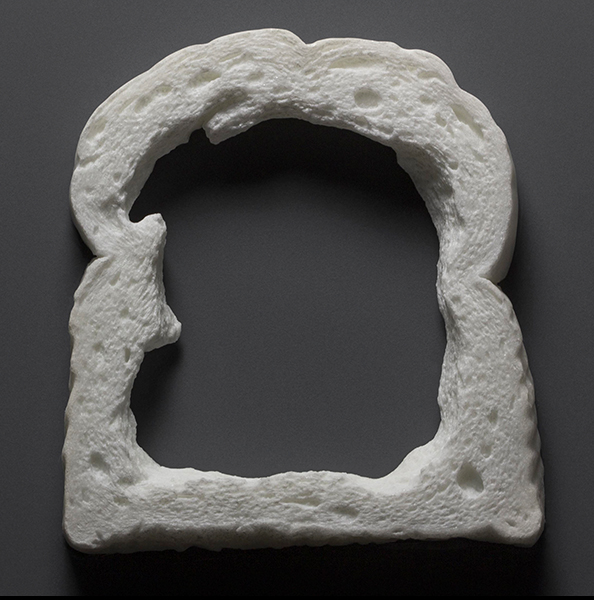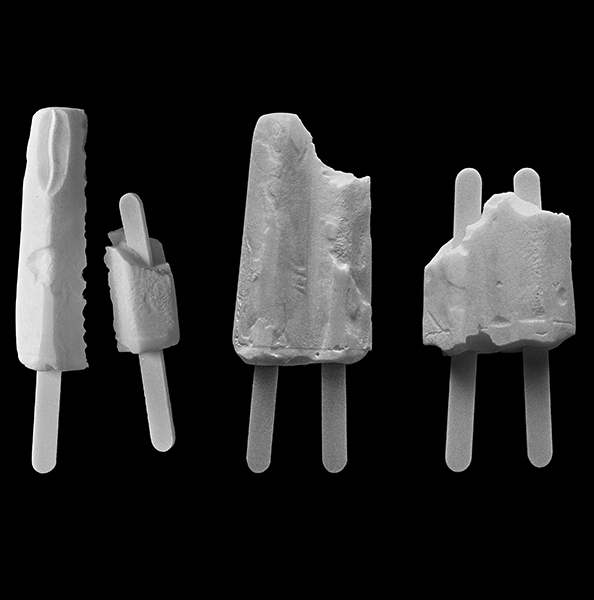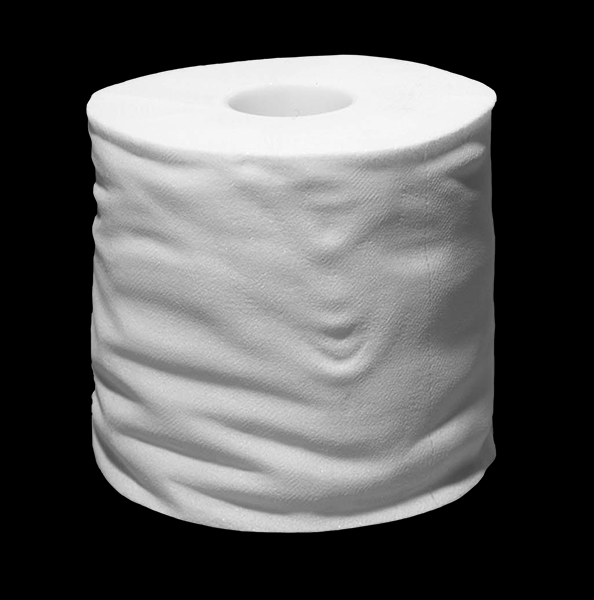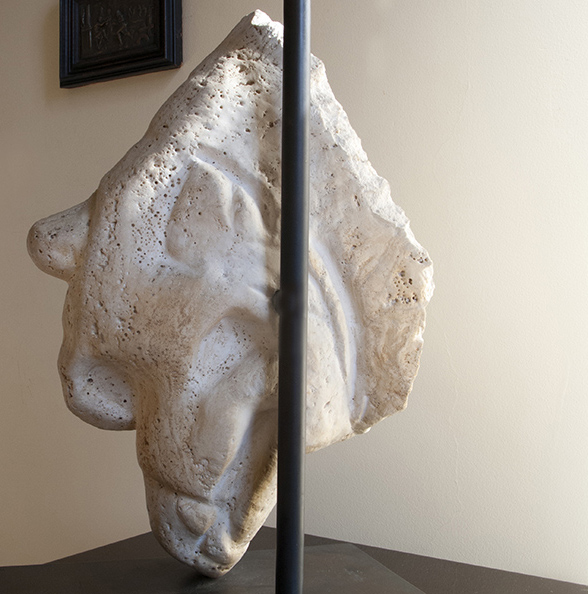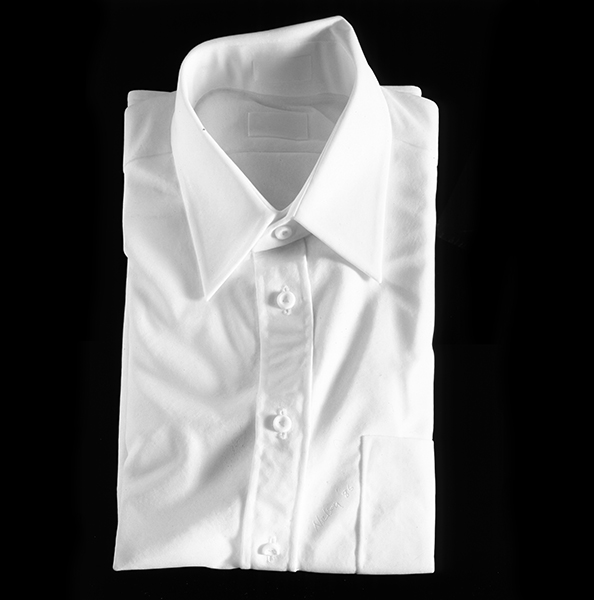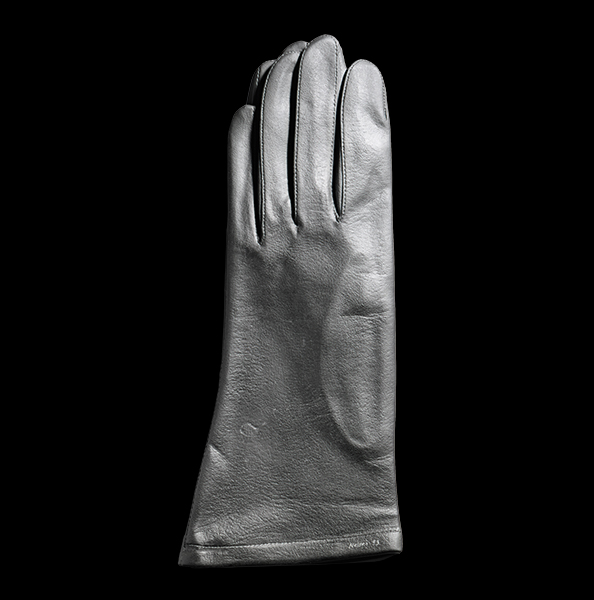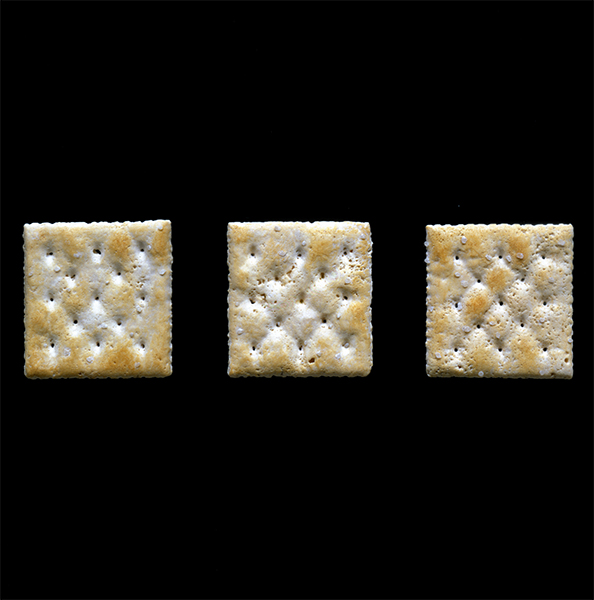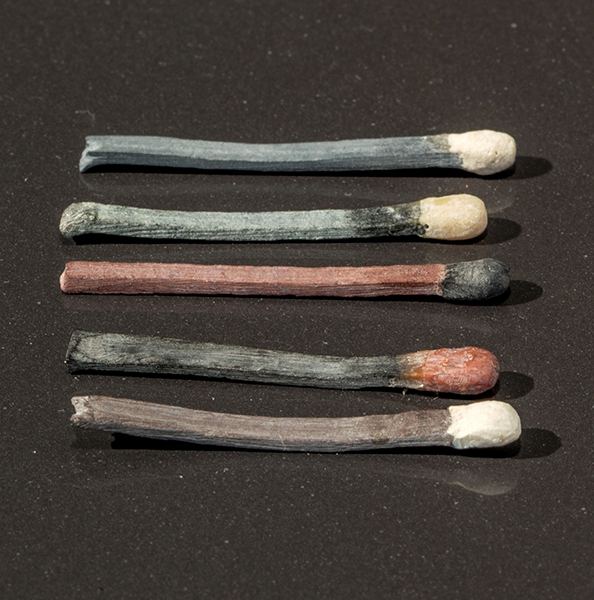Nelson’s polystyrene tea bags and mousetraps recall Donald Judd’s plywood boxes and Sol LeWitt’s systematic permutations of geometric forms...well thought out studies in perception and structure, and not “about” anything but themselves. Nelson is insistent that his sculptures are likewise not “about” tea bags but are “specific objects” intended analytically - to refer only to one another... Nelson’s Holos provide, perhaps unintentionally, an ironic reply to Minimalist notions about specific objecthood. Furthermore, they deliberately confound critical ideas of “high art” and “low art”. Nelson carves virtually worthless Styrofoam with the precision and risk taking normally associated with surgical procedures or diamond cutting; at the same time, he selects the purest white Carrara marble–the medium most treasured for traditional carving–to represent slices of Wonder Bread. Significantly, Nelson always chooses commonplace household objects to be painstakingly replicated, thus inverting the concept of the Duchampian ready-made. He makes the random deliberate; the mass-produced, unique...
Directions; Hirshhorn Museum and Sculpture Garden
Howard N. Fox
Smithsonian Institution Press
Washington, DC, 1979
...it is more affirmative in its genuine appreciation of the beauty inherent in the most ordinary objects...
...“if there is one activity that takes place in my studio, it is learning how to see.”...
...Nelson, who was born in Portland, Oregon, in 1943, is the most precise of the small group of post-Pop realist sculptors....
...Described as an “intimiste,” he admires Chardin’s ability to instill magic in ordinary objects...
...His life-size objects are derived from real objects and not photographs of them, and are not about the objects themselves but about the act of perception....
...Nelson believes that one’s perception of objects is increased if one sees them individually and comparatively so that the nuances of each state become clearer while the observer decides whether to regard objects as six exact duplicates or six unique objects. ....
Contemporary American Realism Since 1960
Frank H. Goodyear, Jr.
...The generation of Pop artists made us, as the art audience, increasingly aware and sensitive to the trappings of our culture, of the objects that we idolize and the things that we consume. The works of that decade hailed the technical supremacy of the machine-made and the machine operator. Warhol dreamed of being a machine and produced a body of paintings that underscored that desire. Lichtenstein developed a style in appreciation of cartoons whereby the process of painting was reduced to filling in between the lines. Jim Dine gave his canvasses real tools and real equipment...
...Nelson, however, has made himself into a kind of inspector general, an expert of sorts who silently challenges the system of mass production. Nelson’s descriptions of hunting out the right model are amusing, for they point out a peculiar trait in us all, the healthy consumer...
Jud Nelson: Sculpture as Seeing;
Michael R. Klein
Artforum
Jud Nelson is part Pop prankster, part Renaissance master, with a good dose of Minimalist strategist thrown in. With HOLOS, an ongoing series of sculptures he began in 1971, Nelson nods to both antiquity and technology.
...Somewhere between the lush fantasy of trompe l’oeil and the analytic obsessiveness of seriality, the HOLOS are cool kitsch, ciphers for the insignificance of material things and the supremacy of observation....
...Nelson consciously accepts the aura of monumental achievement and grand tradition that accompanies sculpting in marble...
Jud Nelson; Fischbach Gallery
Frances Richard
Artforum, May 1998
...an artist who might be called the Faberge of Post-Minimalism. Astoundingly accurate, they trick the eye until it adjusts and starts to discern the subtle textures of the stone, by which time a world of differences has been discovered.
Jud Nelson, Fischbach Gallery
Roberta Smith
NY Times Art Reviews
2/27/98
...a lesson in seeing.
Art: Jud Nelson; Max Protetch Gallery
John Russell, NY Times
April 15, 1977
...Jud Nelson’s Holos sculptures illustrate this multi-faceted sensibility. A case could be made for considering his marble and Styrofoam tea bags, mousetraps and Popsicles simply as white-washed equivalents of Pop art. But if the ubiquitous subjects of his sculptures recall Johns’s ale cans and Oldenburg’s plugs, their presentation in groups of six invites comparison with Sol LeWitt’s serial compositions of geometric forms. And, Nelson’s fixation on surface detail parallels Chuck Close’s cataloging of the minutiae of human physiognomy in his super-scale portraits....
...Nelson’s decision to work in small scale was, to some extent, a result of a desire to hand craft objects– yet another reaction to the character of art in the 60s when sculpture was as much a product of the skills of engineers as of the artist’s vision...
...But Jud Nelson seems to ignore nothing. His astonishingly detailed marble and styrofoam sculptures are records of his ambition to see and reproduce, were it possible, “....every molecule, every atom of an object. If there is one activity that takes place in my studio,” he explains, “it is learning how to see.”...
...The Art of Seeing, by Aldous Huxley, captured his imagination. Suffering from severely impaired vision and facing the prospect of total blindness, Huxley met an ophthalmologist who taught him the unorthodox methods for improving vision developed by Dr. W.H. Bates. The program included exercises for the development of “analytical looking” and “central fixation,” employing such techniques as “shifting,” whereby the viewer continuously scans, rather than stares, at an object in order to see it. Huxley also discussed the importance of memory and imagination, noting that perception and vision are largely dependent upon past experience. Curiously, all along, Nelson had been practicing techniques similar to those described by Huxley, and the book soon became–and continues to be–an operating manual of sorts for him....
...the Holos are resolutely accurate, as coolly descriptive and dead pan as Chuck Close’s portraits. Like them, his sculptures have a strong formal base that relates, in fact, more to minimal and systemic at than to traditional realism. Their serial arrangement, for example, recalls Sol LeWitt’s analytical compositions of geometric forms and his own early measurement pieces. His insistence that his works are not tea bags or mousetraps echoes the minimalist notion of specific objects. He believe that the sculptures should be seen as records of processes–the mechanical processes by which the models were created and his process of recognizing, visually isolating and then piling up each three-dimensional facet on the surface.” He concedes, however, that his art has a certain narrative quality–oblique in the early work, more specific in the melting Popsicle series–that belies this purely formalist stance...
Eight Artists: The Elusive Image
Lisa Lyons
Design Quarterly 111/112
Walker Art Center
30 September–18 November 1979
